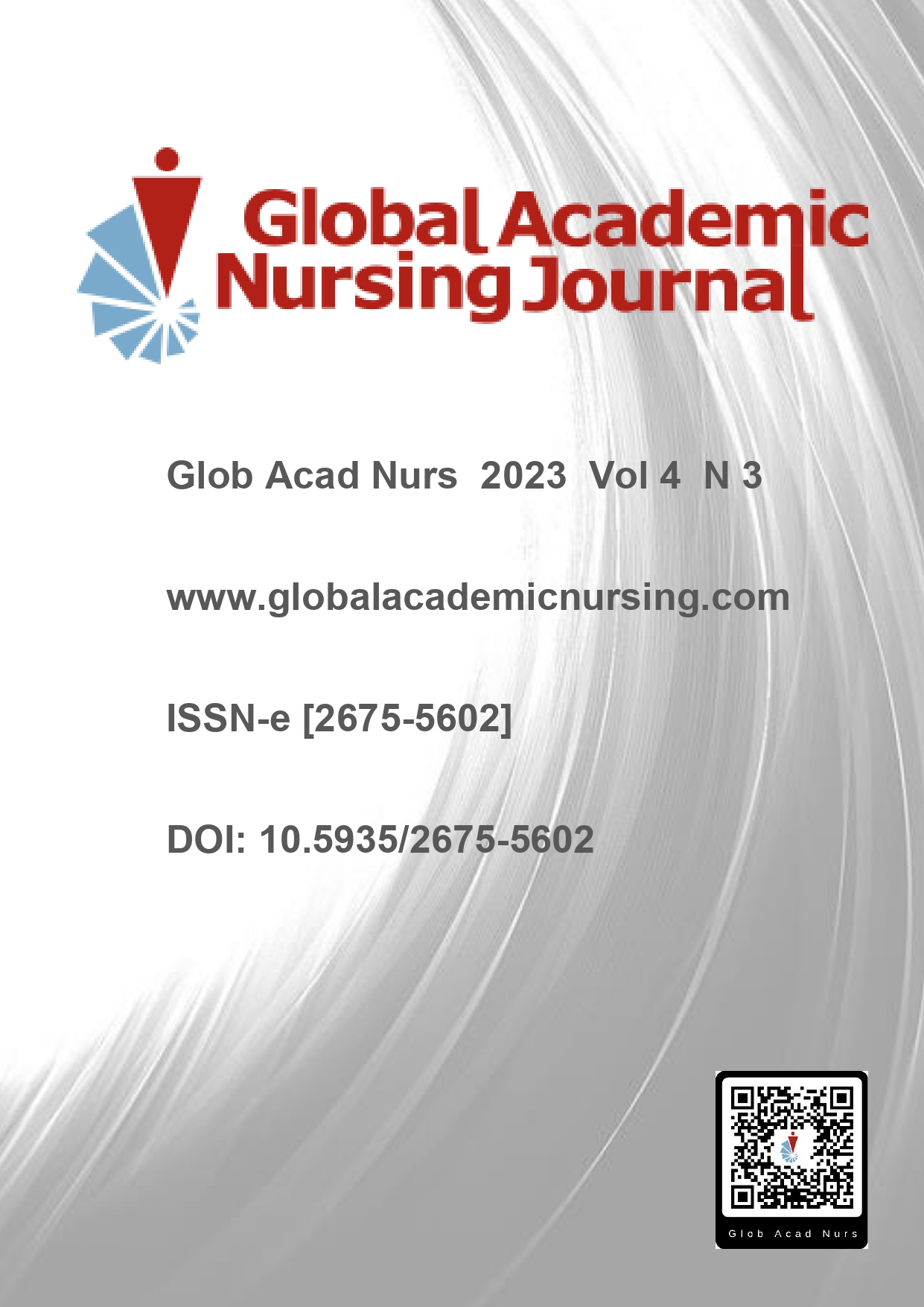Abstract
The aim was to identify microorganisms through the microbial cultivation of bacteria inside ambulances in two municipalities in Baixada Fluminense, in the State of Rio de Janeiro, and to test the sensitivity of these microorganisms to antimicrobials. Samples were obtained from nine specific points inside 6 ambulances. They were inoculated onto salt and blood mannitol agar and were analyzed using matrix-assisted laser desorption and ionization techniques. The sensitivity of seven samples was tested using the disk diffusion method on Muller-Hinton agar. Of the fifty-two samples collected, thirty-one (59.6%) were positive for some genus of bacteria, two (3.80%) were not recognized by MALDI and nineteen (36.6%) were negative. Infection prevention and control practices need to be reinforced, as contamination can result in possible complications for patients.
References
El-Mokhtar MA, Hetta HF. Ambulance vehicles as a source of multidrug-resistant infections: a multicenter study in Assiut City, Egypt. Infect Drug Resist. 2018; 11:587–594. DOI:10.2147/IDR.S151783.
Vikke et al. Prehospital infection control and prevention in Denmark: A cross-sectional study on guideline adherence and microbial contamination of surfaces. Scandinavian Journal of Trauma, Resuscitation and Emergency Medicine.2018; 26(71). DOI:10.1186/s13049-018-0541-y.
Hudson AJ, Glaister GD, Wieden HJ. The emergency medical service microbiome. Appl Environ Microbiol. 2018; 84 (5):02098-17. DOI: 10.1128/AEM.02098-17
World Health Organization (WHO). Report on the burden of endemic health care-associated infection worldwide. 2011; Geneva. Switzerland: wHO; 2011 [citado em 20 jul 2021]. Acesso em: https://apps.who.int/iris/bitstream/handle/10665/80135/9789241501507_eng.pdf;sequence=1
Barsil. Secretaria de Estado de Saúde de São Paulo. Divisão de Infecção Hospitalar. Centro de Vigilância Epidemiológica “Prof. Alexandre Vranjac”. Coordenadoria de Controle de Doenças. Melhores Práticas para Higiene e Limpeza em Ambiente Hospitalar. São Paulo, SP: Secretaria de Estado de Saúde de São Paulo; 2019 [citado em 11 maio 2021]. Acesso em: http://www.saude.sp.gov.br/cve-centro-de-vigilancia-epidemiologica-prof.-alexandre-vranjac/homepage/noticias/noticias/manual-de-higiene
Pereira, ER, Rocha RG, Monteiro NCA, Oliveira AB, Paes GO. Risco de infecção associado ao cuidado no atendimento préhospitalar: impactos para a segurança do paciente. Research, Society and Development. 2020; 9(8):e588985846. DOI: 10.33448/rsd-v9i8.5846.
Liang SY, Riethman M, Fox J. Infection Prevention for the Emergency Department out of Reach or Standard of Care? Emergency Medicine Clinics of North America. 2018; 36(4):873-887. . DOI:10.1016/j.emc.2018.06.013
APIC (Association for Professionals in Infection Control and Epidemiology, Inc). Guide to Infection Prevention in Emergency Medical Services. 2013 [23 abrl 2021]. 86p. Acesso em: https://nasemso.org/wp-content/uploads/Guide-to-Infection-Prevention-in-EMS-APIC.pdf
Vikke HS, Giebner M. POSAiDA: presence of Staphylococcus aureus/MRSA and Enterococcus/VRE in Danish ambulances. A cross-sectional study. BMC Res Notes. 2016;9:194. DOI:10.1186/s13104-016-1982-x
Muller MP, MacDougall C, Lim M. Antimicrobial surfaces to prevent healthcare-associated infections: a systematic review. J Hosp Infect. 2016;92(1):7-13. DOI:10.1016/j.jhin.2015.09.008
Claro T, O'Reilly M, Daniels S, Humphreys H. Surface microbial contamination in hospitals: A pilot study on methods of sampling and the use of proposed microbiologic standards. Am J Infect Control. 2015;43(9):1000-2. DOI: 10.1016/j.ajic.2015.05.009.
Schilling S et al. Transportation capacity for patients with highly infectious diseases in Europe: a survey in 16 nation. Clinical Microbiology and Infection. 2019; 11 (suplt). DOI: 10.1111/1469-0691.12290 .
BRASIL. Ministério da Saúde. Portaria nº 1863/GM, de 29 de setembro de 2003. Institui a Política Nacional de Atenção às Urgências. Brasília, DF: Ministério da Saúde; 2003 [citado em 25 abr 2021] Acesso em: https://bvsms.saude.gov.br/bvs/saudelegis/gm/2003/prt1863_26_09_2003.html.
Winn WC, Allen SD, Janda W, et al. Koneman’s Color Atlas and Textbook of Diagnostic Microbiology. 6th ed. London: Lippincott, Williams & Wilkins; 2005.
Bizzini AC, Durussel C, Bille J, Greub G, Prod’hom G. Performance of matrix-assisted laser desorption ionization–time of flight mass spectrometry for identification of bacterial strains routinely isolated in a clinical microbiology laboratory. J. Clin. Microbiol. 2010; 48(5):1549-54. DOI: 10.1128/JCM.01794-09
CLSI - Clinical and Laboratory Standards Institute: M100. Wayne, Pensylvania, USA. 2020.
Raz R, Colodner R, Kunin CM. Who Are You—Staphylococcus saprophyticus? Clinical Infectious Diseases. 2005; 40(6):896-8. DOI: 10.1086/428353.
Yuan Y, Gao M. Genomic analysis of a ginger pathogen Bacillus pumilus providing the understanding to the pathogenesis and the novel control strategy. Sci Rep 5. 2015; 19 (5):10259. DOI: 10.1038/srep10259.
Oliveira, AC, Bettcher, L. Aspectos epidemiológicos da ocorrência do Enterococcus resistente à Vancomicina. Rev Esc Enferm USP. 2010; 44(3): 725-31. DOI: 10.1590/S0080-62342010000300025
Souza, MA. Emergência e disseminação de Enterococo Resistente à Vancomicina em Hospital Universitário no Centro Oeste do Brasil. Trabalho de Pós-graduação – Faculdade Federal de Goiás, Brasil. 2013.73 p.
Cetinkaya P, Falk P, Mayhall CG. Vancomycin-resistant enterococci. Clin Microbiol Rev. 2000; 13:686-707. DOI:10.1128/CMR.13.4.686
Nikaido, H. Multidrug Resistance in Bacteria. Annual Review of Biochemistry. 2009; 78:1190146. DOI:10.1146/annurev.biochem.78.082907.145923
Lima FLO, Almeida PC, Oliveira, GAL. Enterococcus spp. Resistant to vancomycin and its spread in infections in the hospital environment. Research, Society and Development. 2020; 9(8): e738986404. DOI: 10.33448/rsd-v9i8.6404.
Nigam Y, Cutter J.A. Preliminary investigation into bacterial contamination of Welsh emergency ambulances.
Emergency Medicine Journal. 2003; 20(5):479-482. DOI: 10.1136/emj.20.5.479
Marques AT, Rocha RG, Marins TG, Tavares JMAB, Almeida LF, Pereira ER, Marta CB. Avaliação da técnica de higienização das mãos e sua relação com segurança do paciente. Glob Acad Nurs. 2021;2(Sup.4):e206. https://dx.doi.org/10.5935/2675-5602.20200206

This work is licensed under a Creative Commons Attribution-NonCommercial-NoDerivatives 4.0 International License.
Copyright (c) 2023 Global Academic Nursing Journal

